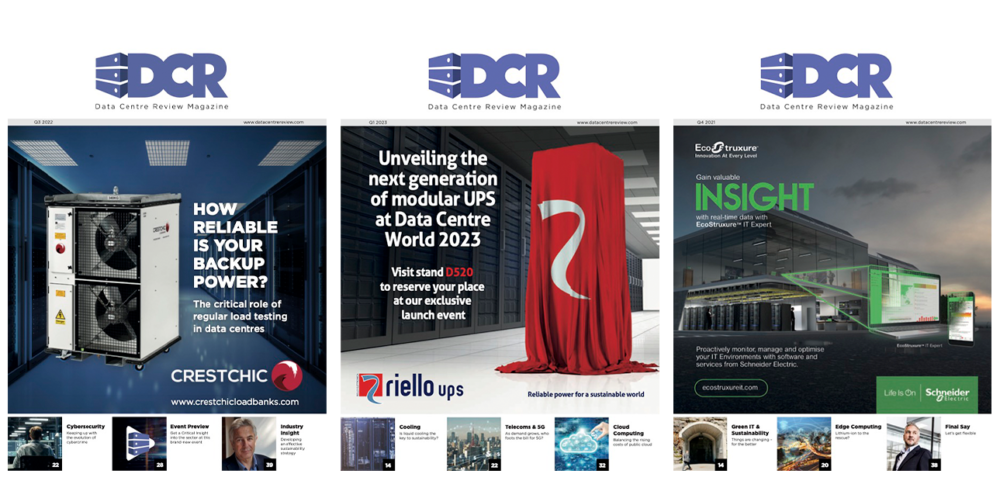Rajasekar Sukumar, Senior Vice President and Head of Europe at Persistent Systems, believes that while hybrid IT strategies offer transformative benefits, they also expose organisations to unique vulnerabilities if data integrity isn’t prioritised from the start.
Over the past decade, technological innovation has surged at an extraordinary pace, with cloud technology forming the backbone of this transformation. As organisations modernise, navigating the demands of digital security and operational agility, hybrid cloud strategies have emerged as pivotal enablers.
According to a 2024 survey by Statista, 89% of respondents stated that their organisation used a multi-cloud strategy, while around 73 utilised services from hybrid cloud providers.
Bridging agility and control for modern enterprises
A hybrid cloud strategy offers the best of both worlds, seamlessly integrating public and private platforms to enable data and workloads to flow fluidly between environments. This flexibility is underpinned by advances in virtualisation, network function virtualisation (NFV), and multi-cloud connectivity.
This model facilitates the migration of workloads with minimal need for refactoring and supports microservices, containerised applications, and virtual machines within the same ecosystem. Such compatibility ensures continuity while driving modernisation. Flexera’s 2024 State of the Cloud report reveals that enhancing current cloud utilisation and transitioning additional workloads to the cloud remain top priorities, irrespective of the level of usage.
By embracing hybrid cloud, organisations can innovate at pace, harnessing the agility of public cloud infrastructures while retaining the reliability of on-premises systems. MarketsandMarkets estimates that the hybrid cloud sector will reach $204.8 billion by 2028, reflecting the increasing demand for adaptable IT infrastructures.
However, as transformative as hybrid IT may be, it is not without its challenges. Organisations must navigate several hurdles to unlock their full potential and ensure the integrity of their data in these complex environments.
Navigating the hidden hurdles of hybrid IT
Hybrid IT offers unmatched flexibility, but the intricate blend of environments also creates challenges that can threaten operational goals and data integrity. One of the most prominent issues is access control. Managing access across hybrid environments is fraught with complexities, as conflicting policies between cloud-based systems and on-premises frameworks can result in gaps that impede authorised users or, worse, expose sensitive data to unauthorised parties. While some organisations attempt to address this by deploying specialised administrative teams, the operational costs associated with such measures are far from trivial.
Another pressing concern is data quality. Hybrid IT environments often suffer from inconsistencies, where updates made in one location fail to propagate uniformly across the system. These discrepancies can create bottlenecks, disrupt workflows, and impede collaboration, particularly for teams that operate across global locations. Without proper synchronisation protocols in place, the efficiency promised by hybrid IT risks turning into operational friction.
Security is another critical area. Let’s tackle the hard truth about multi-tenant cloud environments: they’re becoming prime targets for supply chain attacks. According to a 2024 Statista report, 59% of organisations worldwide fell victim to ransomware attacks between January and February 2024, based on a survey of cybersecurity leaders across the globe. This captures how one weak link in the hybrid chain can cascade into a system-wide compromise.
Data residency and sovereignty requirements add another layer of intricacy to hybrid IT management. Organisations operating across jurisdictions must navigate a maze of regulatory requirements, where non-compliance isn’t just about fines – it’s about fundamental business viability. When your data crosses borders, every byte needs to be accounted for and compliant.
Here’s what makes hybrid environments particularly challenging: the very scalability that makes them attractive also makes them vulnerable. Threat actors are becoming increasingly sophisticated, specifically targeting the unique vulnerabilities that emerge at the intersection of public and private clouds. This requires a complete rethink of traditional security frameworks.
Building resilience in this complex landscape demands a strategic approach. First, data synchronisation across platforms isn’t just good practice – it’s essential for maintaining consistency and preventing costly discrepancies. This means implementing robust systems that ensure updates propagate uniformly across your hybrid environment, backed by comprehensive disaster recovery capabilities.
The solution is in adopting three simple steps:
- Implementing zero-trust architecture that verifies every access request, regardless of source
- Deploying automated governance frameworks that continuously monitor compliance
- Establishing real-time data synchronisation protocols that maintain consistency across environments
The key is to build these security measures without compromising the agility and performance that made hybrid IT attractive in the first place. This isn’t about choosing between security and efficiency – it’s about architecting systems that deliver both.
These interconnected strategies ensure hybrid IT environments remain secure, compliant, and operationally robust, allowing businesses to innovate without sacrificing trust or efficiency.
The UK’s role in hybrid IT’s evolution
Recent commitments by the UK Government to fortify critical data repositories further highlight the national focus on cybersecurity. For organisations, safeguarding sensitive information while enabling seamless interoperability across hybrid environments will be key to unlocking hybrid IT’s potential.
With data centres classified as critical national infrastructure, the UK recognises the vital role hybrid IT plays in economic resilience and national security. By leveraging technologies like AI and blockchain, hybrid IT can enhance data integrity and operational strength. AI’s ability to detect and address risks in real-time, coupled with blockchain’s immutable records, reinforces trust across the ecosystem.
Enterprises transitioning applications and data to the cloud may gain agility and cost efficiency, but the ultimate responsibility for ensuring data remains consistent, compliant, protected, and secure stays firmly with them.
When evaluating hybrid cloud solutions, organisations must prioritise vendors offering robust service level agreements (SLAs) that guarantee both security and performance. Equally, they must carefully assess the level of refactoring and rearchitecting required to maintain optimal application performance. Beyond technical considerations, investments in data integrity – across both on-premises and cloud environments – are essential to fully realise the potential of hybrid IT while safeguarding the trust and compliance it demands.


